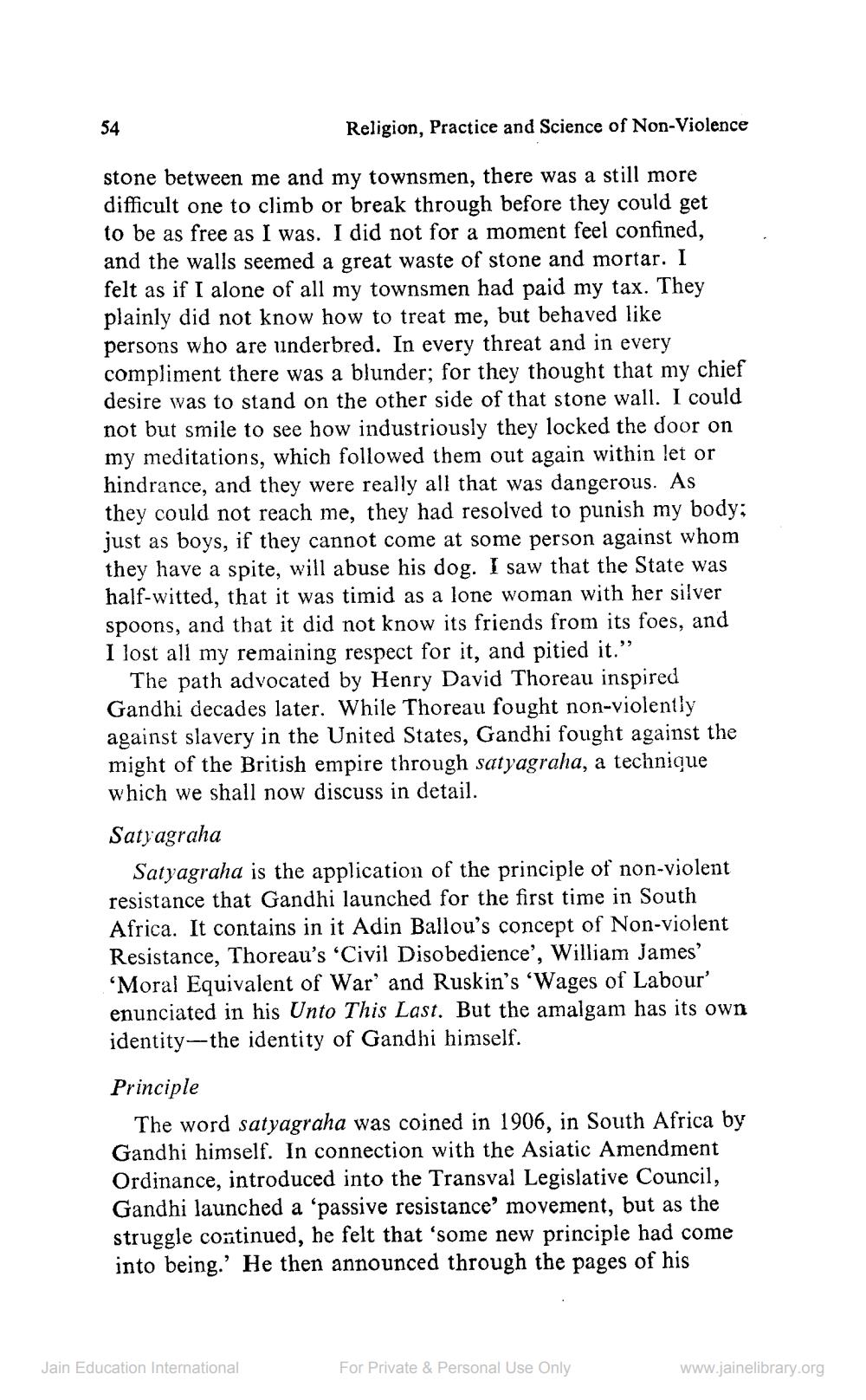________________
Religion, Practice and Science of Non-Violence
stone between me and my townsmen, there was a still more difficult one to climb or break through before they could get to be as free as I was. I did not for a moment feel confined, and the walls seemed a great waste of stone and mortar. I felt as if I alone of all my townsmen had paid my tax. They plainly did not know how to treat me, but behaved like persons who are underbred. In every threat and in every compliment there was a blunder; for they thought that my chief desire was to stand on the other side of that stone wall. I could not but smile to see how industriously they locked the door on my meditations, which followed them out again within let or hindrance, and they were really all that was dangerous. As they could not reach me, they had resolved to punish my body; just as boys, if they cannot come at some person against whom they have a spite, will abuse his dog. I saw that the State was half-witted, that it was timid as a lone woman with her silver spoons, and that it did not know its friends from its foes, and I lost all my remaining respect for it, and pitied it."
The path advocated by Henry David Thoreau inspired Gandhi decades later. While Thoreau fought non-violently against slavery in the United States, Gandhi fought against the might of the British empire through satyagraha, a technique which we shall now discuss in detail. Satyagraha
Satyagraha is the application of the principle of non-violent resistance that Gandhi launched for the first time in South Africa. It contains in it Adin Ballou's concept of Non-violent Resistance, Thoreau's 'Civil Disobedience', William James' “Moral Equivalent of War' and Ruskin's 'Wages of Labour' enunciated in his Unto This Last. But the amalgam has its own identity--the identity of Gandhi himself.
Principle
The word satyagraha was coined in 1906, in South Africa by Gandhi himself. In connection with the Asiatic Amendment Ordinance, introduced into the Transval Legislative Council, Gandhi launched a 'passive resistance movement, but as the struggle continued, he felt that 'some new principle had come into being.' He then announced through the pages of his
Jain Education International
For Private & Personal Use Only
www.jainelibrary.org




